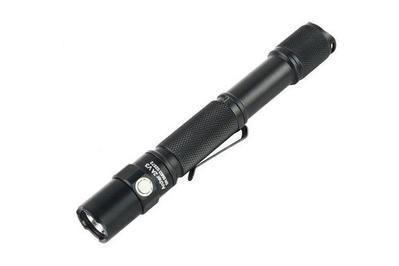
How to Keep Bedbugs From Coming Home With You
After checking into a motel in Berkeley, California, many years ago, my husband and I began a well-rehearsed ritual. We left our two young kids strapped in their strollers, pulled back the bedding, and scanned the surface of the mattress. Poking into the deep seams of the mattress’s pillow-top padding, I found what we feared: a multitude of brown-black flecks.
Bedbug stains.
The motel manager offered to move us to a different room, but instead we drove to a relative’s house that night. That experience taught me that it’s worthwhile to take two minutes to check the mattress before you unpack. A 2016 survey of 100 US hotels, conducted by Orkin, found that 82 percent of them had been treated for bedbugs in the previous year; bedbugs have also been found on airplanes, cruise ships, and public transportation in recent years.
According to research published in the Journal of Medical Entomology, bedbug infestations peak in the summer, coinciding with vacation season. But bed bugs can be a year-round terror. Most recently, viral images of bedbugs crawling on trains and subways in Paris sparked panic (which some experts say was overblown).
Don’t let bedbugs, or the fear of them, ruin your travel. Despite the statistics, the chance of encountering bedbugs in any given hotel room is “pretty darn unlikely,” said Michael Potter, then a professor of entomology at the University of Kentucky. (I interviewed Potter and the other experts in this article in 2019.) Here are some simple steps you can take to make sure you don’t run into bedbugs on your trip.
Know your enemy
In a survey of more than 2,000 hotel visitors conducted by Potter and two other University of Kentucky entomologists in 2015, fewer than one in three could correctly identify an adult bedbug.
Look at guides published by the Environmental Protection Agency, which show the size and appearance of bedbugs at different stages in their life cycle. Bedbugs are flat, wingless, and slightly teardrop-shaped, with tan, brown, or reddish-brown coloring. They range in size from 1 mm (nymphs) to 5–7 mm (adults), and their eggs look like tiny, white grains of rice.
Bedbugs leave behind fecal stains of digested blood, which resemble “little black spots that look like they’ve been made by fine felt-tipped marker,” according to Dini Miller, a professor of entomology at Virginia Tech. (These were the spots I discovered in the Berkeley motel.)
Inspect the area (but don’t tear the room apart)
Whether you’ve checked into a luxury resort, a modest motel, or an Airbnb apartment, spend a few minutes inspecting the beds and surrounding areas for signs of bedbugs.
Pull back the sheets and look closely at the surface, sides, and seams of the mattress near the headboard. “That tends to be the hottest area of the bed” for bug activity, said Potter. Miller suggests running a sticky lint roller over the areas you’re checking, so you can pick up any potential evidence.
Pack a small, strong flashlight to help you see into crevices and behind the headboard if possible. (We recommend the ThruNite Archer 2A V3 in our guide to the best flashlights.) “We know in hotels that bedbugs like to get behind the headboard. The reason for that is it’s the least disturbed area,” Miller said.
Though small, bedbugs and their fecal spots are visible to the naked eye, so if you don’t find anything after a cursory inspection, you can rest easy. “I’m not going to yank the whole bed apart, flip the mattress,” Potter said. Miller agreed: “If you don’t see anything, nothing’s there.”
Bites or skin reactions alone are not a reliable sign of bedbugs. It can sometimes take several hours for a person’s skin to react to an insect bite, so mosquito or sand fly bites from, say, dinner may not show up till morning, Miller said.
“You can’t look at a bite that I have, and a bite that you have, and even say that they’re the same thing, because everybody’s immune response is so individual,” Miller said.
This flashlight is compact enough to tuck into your luggage, and bright enough to illuminate crevices and behind the headboard of a hotel bed.
Buying Options
Protect your luggage
Potter says it's prudent to store your suitcase on a hard surface, such as a dresser or luggage rack, which bedbugs are unlikely to be able to reach. If you’re staying for only a night or two, avoid unpacking your clothing or spreading items around the room. Packing cubes can help you stay organized and access your clothing and belongings without having to remove everything from your suitcase. (We recommend the Eagle Creek Pack-It Reveal Cube Set.)
Miller suggests using a lint roller to check for bugs on your suitcase as well, especially after air travel. “Think about your suitcase and how many other bags it meets on your trip,” she said.
Simple and solidly constructed, this three-cube set keeps your bag organized. The cubes can help you avoid needing to fully unpack while traveling, which limits potentially exposing your items to bedbugs.
Buying Options
This super-sticky paper picks up debris with just a few swipes. Roll it over your suitcase, or along the surface of a bed, to check for evidence of bedbugs.
Buying Options
If you find some, don’t panic
If you’re in a hotel and find evidence of bedbugs, alert the staff right away and request a new room, either on a different floor or several rooms away. If you’re in a vacation rental or Airbnb, you may have fewer options. A representative from Airbnb said the company has a 24-hour customer service line, which can help with refunds and rebooking in the event that an issue like bedbugs arises. The company also advises contacting the host, and taking photos of bug evidence or bites for documentation.
If you think you’ve been exposed, you can take steps to prevent bringing any hitchhikers home. Jeff White, an entomologist and owner of a pest control training and consulting company, suggested keeping a few large garbage bags in your car to store your luggage in. Once home, carefully inspect the inside and outside of your suitcase (the lint roller can help). Run your clothing and other dryer-safe belongings through a hot cycle in the dryer, which will kill any bugs and eggs (washing is unnecessary).
It’s worth remembering that bedbugs don’t pose the public-health risk of some other pests. “Don’t let bedbugs take over your mind,” Miller said. “The housefly landing on your salad is way more dangerous than having a bedbug walk across your bed.”
Mentioned above
- The best flashlights offer unmatched illumination, versatility, and durability. Here’s what we recommend.The Best Flashlight
- The right tools can keep your clothing looking better for longer. Here’s what you need to wash, dry, and spruce up your favorites.11 Cheap(ish) Laundry Aids to Help Your Clothes Look Better and Last Longer
Further reading
The Best Mattress and Pillow Protectors and Encasements
by Autumn Whitefield-Madrano
After 17 hours of research, we think Protect-A-Bed’s AllerZip Smooth Mattress Encasement and Pillow Protectors are the best to ward off bedbugs and dust mites.
The Best Waterproof Mattress Protectors and Pads
by Jackie Reeve
We tested 14 protectors and found that the SafeRest Premium Mattress Protector is the best at keeping mattresses dry while still being comfortable to sleep on.
How to Get Rid of Bedbugs
by Courtney Schley
Bedbugs can get the best of us, but there are steps you can take to beat them.
The Best Gear to Outfit a Vacation Rental or an Airbnb
by Kalee Thompson
We interviewed four Airbnb Superhosts and over a dozen frequent rental guests to determine the top items to invest in for an overnight rental.






